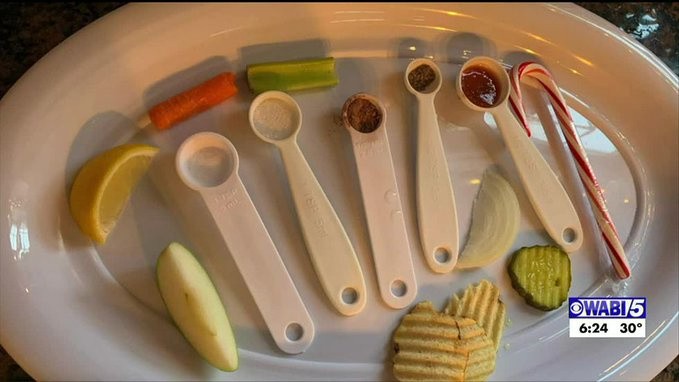A sixth-grader from Hampden, Maine, designed his own science experiment to answer questions about COVID-19's effect on his classmate's ability to taste foods.
In an interview with local news outlet WABI, young Beckham Rand explained: "When I found out that my friend, Isaiah, was diagnosed with COVID-19, I had a lot of questions on what and why he couldn't taste anything."

RELATED ARTICLE: Loss of Smell and Taste: Peculiar Signs of COVID-19
A Simple COVID Taste-Test Experiment
Learning that the only symptom his classmate, Isaiah Shaw, was displaying loss of taste, the Reeds Brook Middle School student thought that he could turn the experience into a fascinating science experiment. Explaining to the Maine TV station, Rand said that they were trying to figure out what and why Shaw couldn't taste. "COVID-19 comes with a lot of symptoms, but thankfully, he only had one," Rand added.
Meanwhile, Isaiah Shaw agreed to his fellow sixth-grader and told WABI: "I thought it was something interesting we could do one day."
The pair then listed different foods that correspond to different flavor profiles: having foods that are bitter, sweet, spicy, and salty for Shaw to test. Their experiment included an apple, a pickle, a potato chip, white onions, carrot, lemon, red hot sauce, curry powder, celery, sugar, and cocoa powder. Together with their respective parents and Danielle Lorusso, the boys' science teacher, their COVID taste test experiment proceeded.
Lorusso, a Reeds Brook Middle School science teacher, recounted thinking that the idea was "wonderful." She shared that Rand's mother emailed her about this experiment, and she was "thrilled."
The experiment was conducted via video chatting app FaceTime, with Shaw trying the foods blindfolded and Beckham recording the data from the tests. Shaw explained that it was "interesting to see what I thought things would be not knowing what it was and look at it after not knowing it was rather than what I thought it was."
After the taste tests, Rand noted that his classmate couldn't taste many of the items on their lists, with an interesting discovery being Shaw mostly tasting the salt in the foods.
Gathering Additional Data
Aside from answering which tastes Isaiah can still perceive, Lorusso commended her students' positive attitude in the face of Shaw contracting COVID-19. "It added a positive spin to something that can be so negative," the science teacher noted. "And I just loved that they wanted to go above and beyond and try to create a well-designed experiment, and that's just so exciting."
Additionally, Rand has already designed a Google Docs that allows other people from anywhere in the world to conduct their own COVID taste tests. "Go find a blindfold! You can use anything as long as your eyes are covered: scarf, bandana, or banana peel!" the experiment guidelines said, explaining that it is necessary to eliminate other variables like sight and smell.
RELATED ARTICLE: Century-Old Physics Problem Solved by a Student
The experiment is fun and easy to follow, noting the necessity of having "a person to feed you" in experimenting, noting that "it could be messy" without it. Responses to the online experiment form are supposedly anonymous, with no email attached to submitted answers.
For a short explanation on how COVID causes loss of smell and taste, see the below video from The Psychological Society:
Check out more news and information on Science Experiments on Science Times.
© 2025 ScienceTimes.com All rights reserved. Do not reproduce without permission. The window to the world of Science Times.











